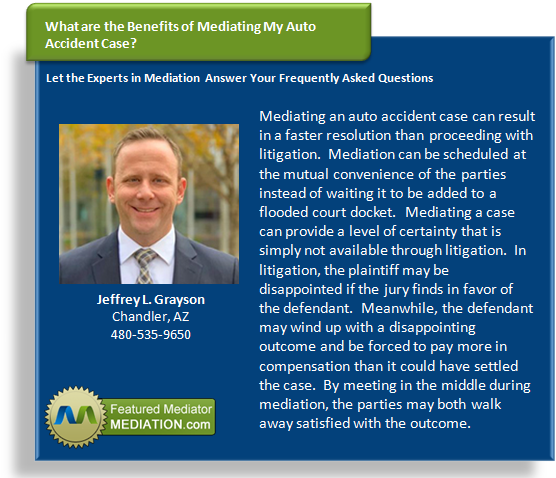The Different Styles of Mediation
In any discipline, there are several approaches to take to arrive at the same conclusion. Mediation is no different and has been practiced and taught in various styles. In the belief that their way is the best way, some mediators might be tempted to make the accusation that a certain approach is not “real” mediation. The truth is that each style of mediation comes with its own pros and cons—with mediators likely to express strong opinions about their own personal style and why they don’t prefer others.
Facilitative Mediation
Facilitative mediation is likely the type of mediation that most practitioners know well. This traditional style of mediation was taught and practiced in the 1960s and 1970s and is still taught today in many programs and schools of thought. In this type of mediation, the process is structured in such a way that the mediator assists the parties by asking questions; at the same time, he or she validates and normalizes the points of view of the parties in conflict. However, it is still up to the parties in conflict to arrive at a successful and fair conclusion to the conflict. In facilitative mediation, the mediator avoids making any recommendations or giving his or her advice, believing that the role of the mediator is to facilitate a resolution but not necessarily force it. Put simply, the mediator allows the parties to be in complete control of the outcome.
Evaluative Mediation
Evaluative mediation as a style of mediation was developed out of court-mandated mediation and is a process that is patterned after the typical settlements held by judges. A mediator who practices evaluative mediation helps the parties in conflict arrive at a resolution by showing them the weaknesses in their case and evaluating what a judge or jury would be likely to decide if the case were brought to litigation. Focusing on legal rights of the parties instead of “fairness”, an evaluative mediator will likely meet with each party and their attorney in separate meetings. The process of evaluative mediation usually involves a point-by-point evaluation of cost vs. benefits in deciding to pursue legal action in a case, and because of this, most evaluative mediators are attorneys.
Transformative Mediation
This newer concept in the field of mediation was coined in 1994 by Folger and Bush in their book The Promise of Mediation. As a form of facilitative mediation, transformative mediation focuses on the values of “empowerment” and “recognition” as keywords, and parties meet together because it is only through meeting face-to-face that the concept of “recognition” can truly happen. As with facilitative mediation, transformative mediation is structured so that the parties are in control of the outcome and the mediator is a facilitator to this conclusion.
Pros and Cons of Each Style
It would seem that in general, mediators follow a continuum from transformative to facilitative to evaluative mediation, depending on the situation and the needs of the parties in conflict. However, there are some mediators who are convinced that one style of mediation is more true to the core philosophy and purpose of mediation, and will rely on it solely for their mediation practice.
Those who practice transformative mediation solely often claim that mediators who use the facilitative and evaluative approaches put too much pressure on clients to reach a resolution. They firmly believe that in the process of mediation, the clients should be the ones who decide whether they really want a resolution, not the mediator. However, those who practice evaluative mediation take issue with the fact that transformative and facilitative mediation take too long to reach a satisfactory conclusion.









